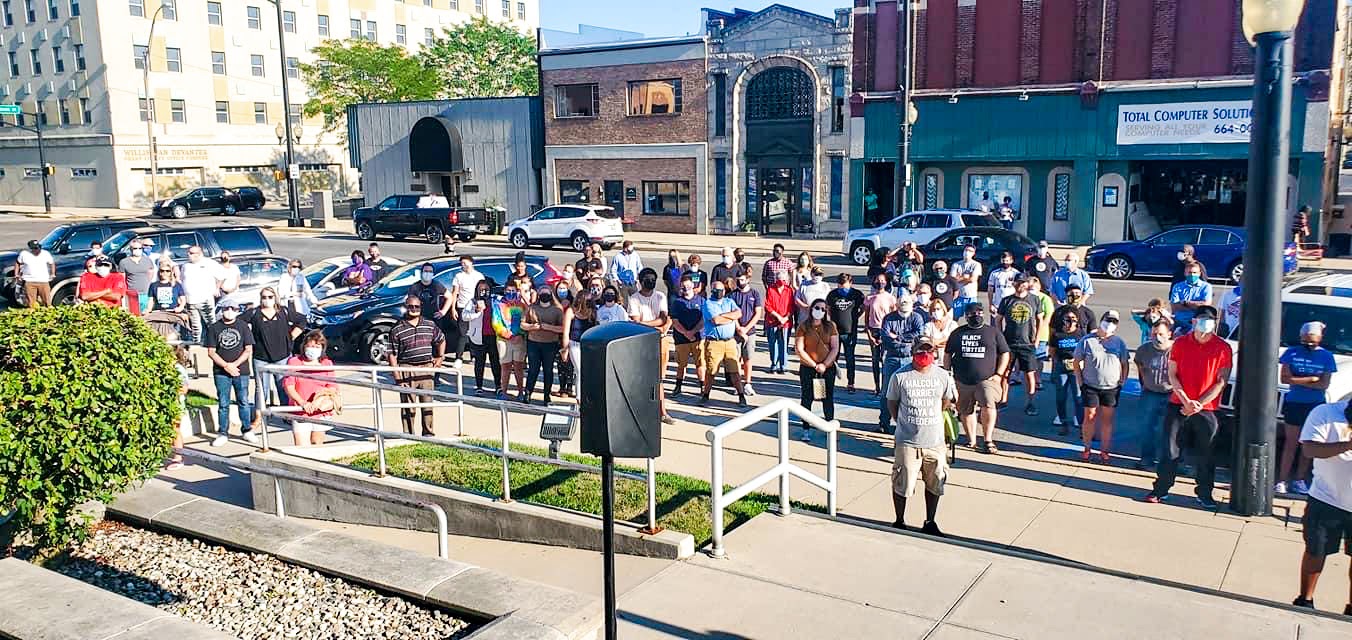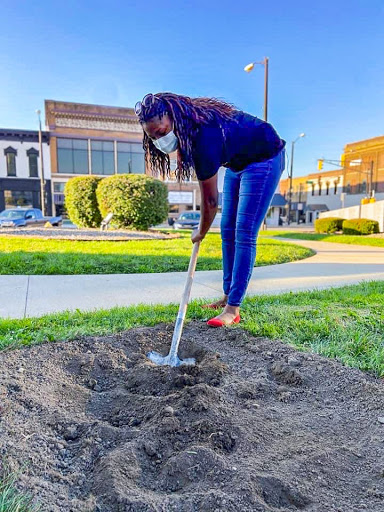Sep 22, 2020 | Travis Bannon, Associate Director of Student Ministries, St. Luke's Indy
As an uninformed white man who grew up in a rural homogenous small-town, possessing little to-no knowledge of systemic racism, I wasn't on the lookout for how racism was affecting my new home when I moved to Marion. Gradually, however, it became clear that there was both a past and present reality of deeply rooted racism that pervaded the DNA of this community resulting in very real oppression. Working with black youth through a basketball ministry was one of my primary eye-openers. I loved those kids and playing basketball with them, while confronting my privilege for the first time and beginning to learn about racial inequality. So when IWU (a predominantly white university) put up signs on their basketball court prohibiting "members of the community" from playing on the court without IWU students or staff present, I saw first-hand how this was plainly meant to discourage black youth (the same ones I played ball with) from coming to campus. Of course, it was under the guise of "risk-management" but the message was clear—you don’t belong here.
Near the end of my time at IWU there was an incident where an assistant fire chief tossed a noose at one of his black co-workers. This incident is appalling by itself, but held extra significance because in 1930 two young black men named Thomas Shipp and Abe Smith were lynched by a mob on the courthouse lawn. A famous photograph taken at the lynching inspired the song “Strange Fruit” made famous by Billie Holliday. This traumatic event is not confined to the past but will continue to be long-lasting, undergirding the collective memory and identity of Marion. It will mar the future until the community addresses them and begins the process of healing. Enter Torri Williams.
Torri and several other community leaders began the process of community healing when they heard of the Community Remembrance Project, a program by the Equal Justice Initiative which encourages communities to confront the ugly history of lynching in their county, pay homage to the victims, and collect soil from the lynching site to be on display at their museum in Montgomery, AL. Torri and company decided to pursue this remembrance project for Marion, recognizing that the community still has deep wounds in need of addressing.
Now employed at St. Luke’s UMC in Indianapolis, I was asked to be on a coalition doing research on the lynchings in various Indiana counties with the aim of helping communities complete the Remembrance Project. I was assigned Grant County (where Marion is located) since I moved to Indy from there. Torri and her team already had the project almost complete when I touched base, having worked for years behind the scenes to make it a success. They met with descendants of the victims, city officials, and community leaders to ensure the project’s support. I am thankful to have been able to merely show up and watch the collective healing happen.
On August 7th 2020, exactly 90 years after Thomas and Abe were lynched on the courthouse lawn, we gathered at the courthouse to honor their memory, bring healing, and confront racial injustice. It was a moving ceremony that invited the community present to take part in scooping soil from the site. That day I learned several things:
- No community is free from a complicated history of racism
- This history pervades and shapes the present reality
- For communities to begin to heal, this history must be addressed in a collective manner
- Ceremonies like this are just the beginning—communities must continue to engage in the hard work of uprooting systemic racism
Marion has a long way to go; but on August 7th, I believe the collective community took big steps forward. If you are interested in participating in a Remembrance Project, our team is still working with Clark, Henry, Webster, Knox, Kosciusko, Marion, Posey, Pulaski, Spencer, and Sullivan counties; they have not completed a project yet. We are looking for connections to community leaders in these counties who are willing to boldly confront their community’s past. Another community who completed this project is Vigo County. You can see a moving video of Vigo’s ceremony here.
My encouragement to you the reader is this: get to know the history of your own community and neighborhood. Learn what past events have shaped the present reality. How might you do the work of remembering and uprooting systemic racism and become an anti-racist in your own community?
About Travis Bannon: Originally from the West Lafayette area, Travis is a graduate of Indiana Wesleyan and deftly skirts the IU/Purdue question whenever it arises. He loves sports, all things outdoors, has lots of hobbies, and is passionate about leadership development with youth and youth leaders. He loves the Lord and is always excited to share his faith.

